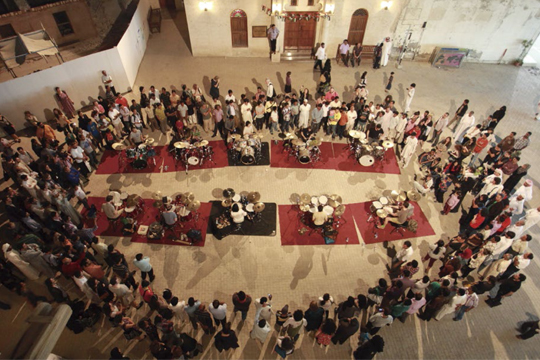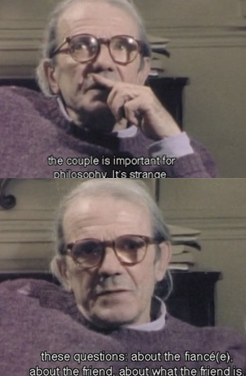GLOBAL ART FORUM: A FRIENDLY AFFAIR
| July 23, 2013 | Post In LEAP 21

Courtesy of Sharjah Art Foundation
THE ART FAIR as we know it is no longer free to exist in and of itself. Come vernissage or even earlier, local arts and culture organizations are now bound like lemmings to organize their own spinoff ordeals. An art fair is not a proper art fair without a full roster of ancillary events and exhibitions. The citywide “art week” is thus a requisite appendage of a fully-formed fair. Similarly, on the fairgrounds themselves, “meetings,” “encounters,” and “symposia” have become expected structural apparatus. Some of these come off as no more than empty gestures, and forgivably—might they be aware that they are not their own raison d’être, that their purpose is auxiliary to the fiscal exchanges happening in whatever convention center next door? Art Dubai’s annual discussion and presentation series, however, has taken a nicely tangential direction, shunning subordination towards assertions of a more mindful nature.
At the seventh edition of the Global Art Forum (GAF)—assuredly titled “It Means This” and certainly inspired by a byproduct of last year’s forum, Lara Khaldi’s Arabic Art Glossary— no ruminations on, say, the state of curation or the biennial mechanism were to be heard. As can be inferred from the forum’s title, its core was “this”—“this” referring to a number of things, but not contemporary art. Apologetically noted by director H.G. Masters and chairman Shumon Basar: as the word sitting between “global” and “forum” was not to be found anywhere among the scheduled content, GAF was thus a “33% lie.” Embracing this lie, editor-at-large of The New Inquiry Maryam Monalisa Gharavi then took the stage, brandishing a list of other “words, terms, clichés, and misunderstandings” that the invited artists, musicians, museum directors, strategists, writers, and thinkers would instead examine during the forum’s six days: Heritage, Biography, Freezone, Score, Place, Academese, Advert Adverts, Drone Fiction, MENA (Middle East Nervous Anxiety), Neologism. This alone serves as an indicator of GAF’s brash but laudable incantations. The formation of language is normally a passive endeavor; new dictionary entries are born of popular consensus. Their necessity is gauged by frequency of utterance—just as is that of the artist, curator, or institution of the moment. Global Art Forum 2013 offered an active, concerted promotion of new dictionary entries, choosing not to react to existing art world mechanisms, but create parallel ones.
Although it was unclear as to which category the London-based editor and writer and founder of the agence de pensée White Box Black Box Charles Arsène-Henry was addressing with his presentation (Heritage? Academese?), it offered a solid, albeit not explicit, theoretical consideration of the circumstances that allow for this, the Art Dubai-GAF model. Invoking the writings of Gilles Deleuze, Arsène-Henry mentioned a conceptualized version of friendship: as a condition for thought. In this model, the “friend” itself is irrelevant; what matters is the movement in the space between friends. Art Dubai and GAF, then, might function as a suitable example of two good ‘ole pals getting along well. Paired together, the coexistence allows for reciprocally increased meaning. Art Dubai benefits from the ideas, collaborations, and respect generated by GAF, and GAF from the possibilities resulting from the general success of its host. In praxis, though, the two may remain functionally independent of one another. Herein lies, embodied by this coupling, a desire for the reunion of two long-lost lovers— (art) discourse and (art) dealing. (That is, of course, supposing the art market itself was actually informed by a bit more rigorous intellectual rigor than it is today).

Let us suppose that the art fair represents the psychology of the art world. Freud defined the subconscious as a theater on which our mind plays out the exaggerated drama of our psychologies. In the Madinat Jumeirah, Art Dubai had brought high-cultural commodity and its fantasies to be enacted with wonderful and tasteful precision. Capitalist desire was wrought. At Fort Island, meanwhile, another Deleuzian assertion—that the subconscious is not a theater, as Freud posited, but a factory—set about assiduously oiling up machinery beyond the welding in which the art fair forum usually exists: namely, by acknowledging culture outside of the art industry, as well as its correlation to and influence on the art industry. (Drone fiction, anyone…?) Among the invited guests, the “artist” was barely present. He was chiefly superseded by those outside the art-industry consciousness: the political scientist, the translator, the novelist, the archaeologist, and so on—those who have as much or even more impact on the world and its artists than do the pedestaled curator and critic. Giving voice thus to other spheres of truth under the auspices of a contemporary art industry event, GAF continuously gleaned from its own opening remarks: “Words are ahead of reality…but sometimes it’s the other way around.”
Addressing GAF’s attempted recoinage of “score”—here meaning to compose, to scratch, and to delineate— the sound artist and composer Tarek Atoui outlined a brief history of Arabic music composition. The overarching theme to his lecture, Atoui explained, was the dissemination of Arabic music from the courtyard to the public sphere. (Fittingly: he had just initiated his outdoor composition Within throughout the city of Sharjah for Yuko Hasegawa’s courtyard-inflected Sharjah Biennial 11 just a short drive away.) When the gramophone first appeared in the region, local musicians were hesitant to embrace it. Rooted in oral tradition, their art was normally performed by several instrumentalists on the fly, often for several hours at a time. To adapt to the conditions of recording meant constricting their expressions to a mere three minutes or less. After a long but understandable struggle, these artists eventually gave in to the benefits of the medium, perhaps realizing that for music, just as for rhetoric, a well-structured three minutes is more widely and efficiently disseminated and appreciated.
And later: In the 1930s, the Cairo Congress of Arab Music called upon musicians from over the Middle East to converge in Cairo. The purpose of this meeting was yet another source of trepidation for the musicians: the standardization of musical notation. Yet once everyone adopted the form, new possibilities for collaboration and creation were suddenly possible. It might be said that serious art-related commentary and criticism has similarly long shunned the art fair, too, as a capitalist diversion from the real stuff of art. The Global Art Forum is an indicator of the possibility of another standardization, namely, that the mind can in at least this one way feasibly espouse the art fair, and to a rather harmonic effect.
One concrète (!) example of this harmony: one hour after Atoui’s talk, the saxophonist, lyricist, and “physical” composer Andre Vida enacted a wild, screech-and-run interpretation of Atoui’s 44-day-long Within—in less than two minutes. This bout of pure performative madness was as far removed from the material content of the fair itself as it was reflective of GAF’s attitude towards cultural activity: the contemporary art world can be itself, but ideally, it will wholeheartedly allow for the variegated and unconstrained inclusion of its Other.
Such activities of immaterial culture and knowledge are bound to be transient. The legacy of their production, however, does not have to be. Beyond their newly proposed unison of fair and forum, Art Dubai and GAF seem determined to set a template for posterity. Another attempt at standardization, here of a different kind of notation, that might do the (art) world well: a bold and concentrated orchestration of non-commodifiable cultural content alongside its commodifiable benefactor that functions not only for the sake of its own performance, but also for the sake of its subsequent score. Hence this article.


